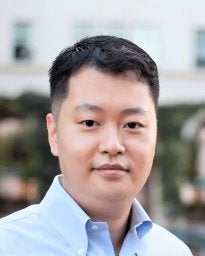Despite being an old material in optical and microwave technologies in its bulk form, thin-film lithium niobate (TFLN) has recently emerged as one of the most promising integrated photonic platforms owing to its strong electro-optic (EO) coefficient, quadratic optical nonlinearity, and broadband optical transparency ranging from 350 nm to 5 µm. In this talk, I will first overview the basic optical properties of LN, and how LN nanophotonics can grant us new regimes for studying ultrafast and nonlinear photonics. Subsequently, I will delve into some of our recent experimental results on the realization and utilization of dispersion-engineered and quasi-phase-matched ultrafast photonic devices in both classical and quantum domains. I will discuss the realization of 100 dB/cm optical parametric amplification, 1.5-3 µm widely tunable optical parametric oscillator (OPO), ultra-wide bandwidth few-cycle quantum squeezing, femtosecond and femtojoule on chip all-optical switching, and the integrated mode-locked lasers based on TFLN with Watt-level peak power.

Qiushi Guo is an Assistant Professor at the Advanced Science Research Center (ASRC), the City University of New York. Prior to joining the ASRC and the CUNY Graduate Center, Qiushi was a postdoctoral research associate at the California Institute of Technology. He received his Ph.D. in Electrical Engineering from Yale University in Dec. 2019. He received his M.S. degree in Electrical Engineering from the University of Pennsylvania in 2014, and his B.S. degree in Electrical Engineering from Xi’an Jiaotong University in 2012. Qiushi is the recipient of the NSF CAREER Award and was honored as one of the 2022 Rising Stars of Light. Additionally, he was awarded the 2021 Henry Prentiss Becton Prize in recognition of his outstanding research achievements at Yale University. His research interests include integrated nonlinear and quantum photonics, mid-infrared photonics, and 2-D materials optoelectronics. He has published more than 40 peer-reviewed research papers in leading scientific journals with citations more than 4000 times.
